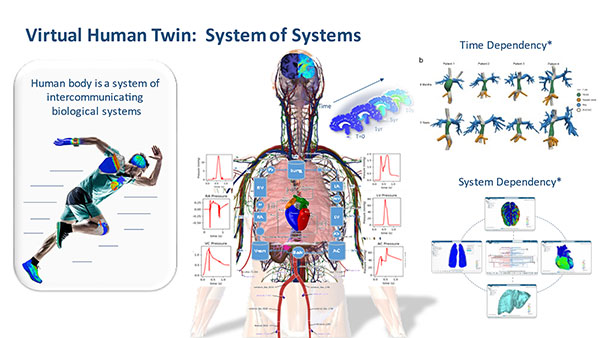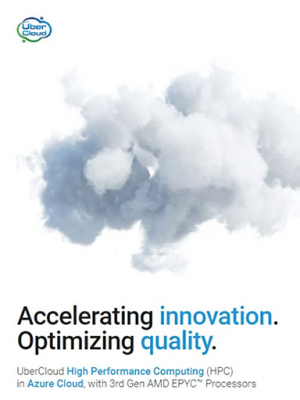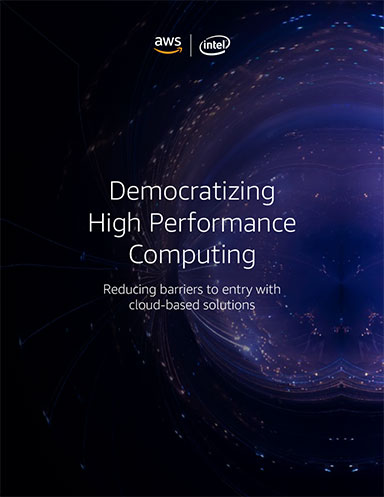Living Heart Project Meets HPC
This piece highlights the possibilities and potential that lie at the intersection of cloud computing and cardiac care.

With the Living Heart Virtual Twin model, researchers have the ability to model high-fidelity organs such as the heart or the lungs for a variety of applications. Image courtesy of UberCloud.
Latest News
March 29, 2024
By Steven Levine and Wolfgang Gentzsch
In an era where healthcare is being revolutionized by technology, the synergy between high-performance computing (HPC) and medicine is paving the way for unprecedented advancements. Here, we highlight the possibilities and potential that lie at the intersection of cloud computing and cardiac care, envisioning a future where digital health drives medical innovation, improves patient outcomes and shapes the next frontier of healthcare.
Way Back When
In the early days of HPC, modeling and simulation research started on supercomputers like the Cray-1 (1974) and the Fujitsu VP-100 (1980). These systems accelerated computational sciences by a factor of 100, enabling scientists and large industries to move from two-dimensional to three-dimensional (3D), from Euler equations to Navier Stokes, from laminar to turbulent, from 100K finite elements to 1 million, and to 1 billion and more today.
But in the mid-1990s, with the advent of distributed computing on smaller systems, powerful workstations and servers interconnected by faster networks, and the parallelization of application codes then running in parallel on more, faster and networked compute nodes, traditional tightly coupled, monolithic supercomputers have been replaced by Beowulf-type multinode compute clusters and parallel applications orchestrated by intelligent workload management software, and following the Moore’s law performance trajectory for the next 20 years.
Living Heart Project Evolves
Some applications (for example, CAE in automotive and aerospace) made great progress during that time, while others, like biomedical simulations, followed slowly, for example, modeling the human heart. We wondered if this situation was due to technology limitations, or maybe we just didn’t understand the human heart well enough, or simply it might be a cultural result of the history of the field.
Looking at the massive amount of research and clinical data collected daily on the human heart, it is fragmented and spread out all over the world so each group can become an expert in their domain. We asked the question, what if these experts actually combined their knowledge? Did we collectively know enough to fully replicate the function of a human heart? And that was the birth of the Living Heart Project (LHP).
The LHP Community applied modeling and simulation to better understand the heart as a multiscale, multiphysics problem, which finally led to the Living Heart Virtual Twin. A high-fidelity model (in fact, two models) one representing the detailed electrical system and the other tightly coupled to model the structural response to the electrical stimulus; and of course, the physical response: The heart beat will drive blood flow, completely replicating the heart’s function. With this modularity you can introduce structural heart diseases or electrical abnormalities such as heart block or arrhythmias, study the effect on blood flow and design devices to virtually cure diseases.
Look to the Future…
With the Living Heart Virtual Twin model, we have the ability to include high-fidelity organs such as the heart or the lungs; these “system-of-systems” models will allow real-world test conditions to be captured and used to create virtual twins that mirror patient behavior as well as anatomy.
In the near future, we will enter the most exciting stage of this journey—moving from the representation of things to life. Imagine being able to model, test and cure a human body as we do with a plane or a car? We call it the “virtual twin experience of humans.”
HPC’s Role in Heart Project
Today, members of the LHP, from biomedical researchers to practicing clinicians, harness the power of UberCloud to simulate the human heart to generate medical answers at unprecedented speeds. Virtualizing the patient experience provides unprecedented potential to develop new medical innovations and transform patient care.
Since the early days of the LHP, around 2017, when the Living Heart Model reached its first maturity level, UberCloud was approached to support the community with more computing and data resources, with its automated and self-service engineering simulation platform.
LHP members like Stanford University (Professor Ellen Kuhl and team), Admedes (Dr. Philipp Hempel), Enmodes (Dr. -Ing. Deepanshu Sodhani), the National Institute of Mental Health in Bangalore (Dr. G. Venkatasubramanian and team), and 3DT Holdings (Yaghoub Dabiri, Ph.D. and team), approached UberCloud and performed exciting LHP projects that won several prestigious international awards.
More Simr Coverage

Subscribe to our FREE magazine, FREE email newsletters or both!
Latest News







